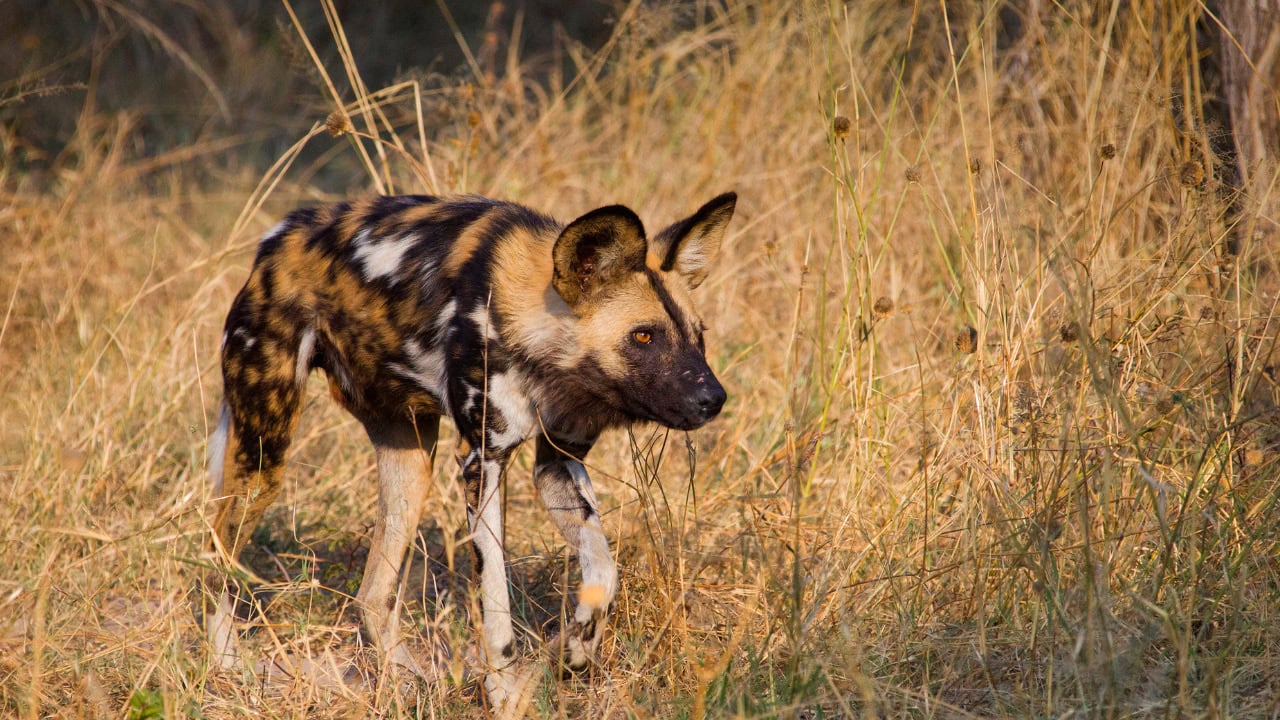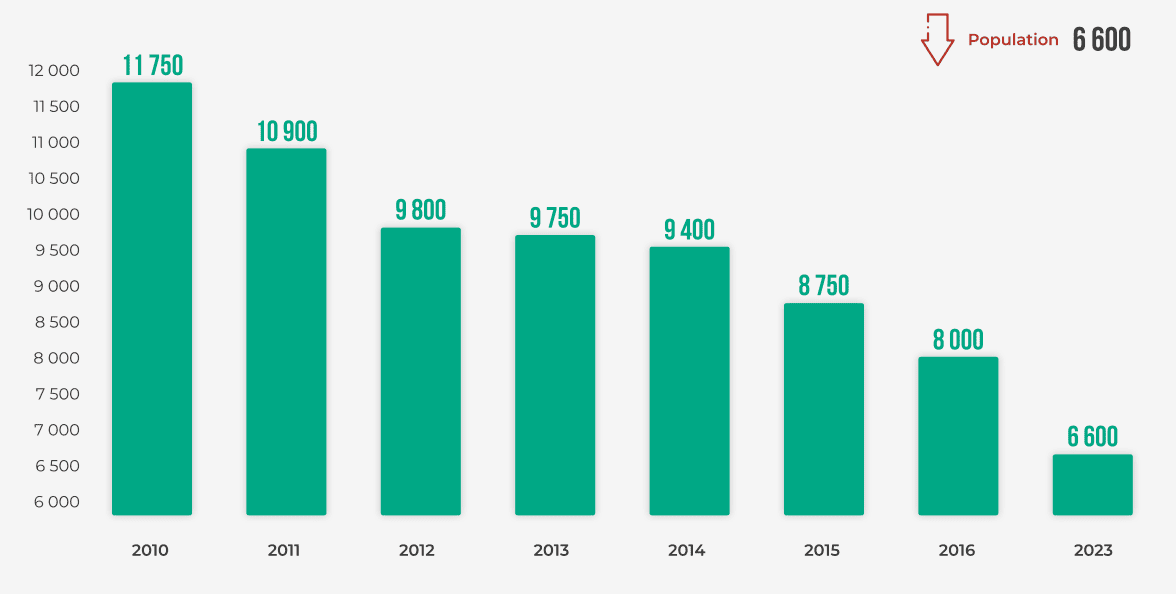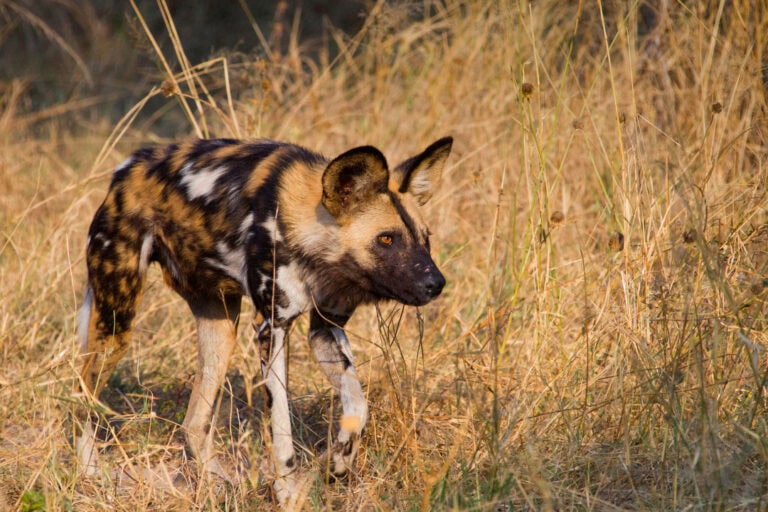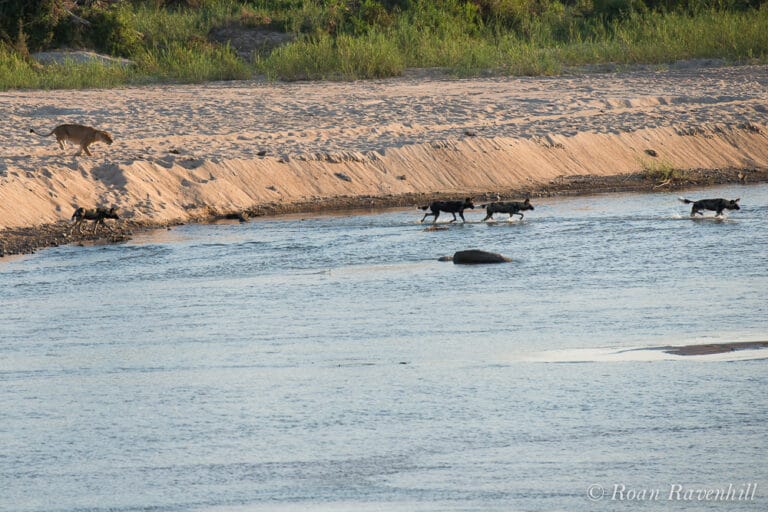Status
Endangered
Population
1400 mature adults with 6600 total
Scientific name
Lycaon pictus
Height
0.76 M
Weight
18 - 31 KG
Habitats
Deserts, Forests, Grasslands
% African Wild Dog population in Africa:

The African Wild Dog (Lycaon pictus), also known as the African Painted Dog or Cape Hunting Dog, is a unique and fascinating carnivore that is native to Africa. Unfortunately, this remarkable species is currently listed as endangered on the IUCN Red List, with an estimated population of around 6,600 adults, including 1,400 mature individuals, living in 39 subpopulations.
The African Wild Dog population has been declining due to various threats, including habitat fragmentation, human persecution, and outbreaks of diseases such as rabies and distemper. The largest subpopulation probably comprises fewer than 250 individuals, making the African Wild Dog one of the world’s most endangered mammals.
African Wild Dogs are highly adaptable and can be found in a wide range of habitats, including savannahs, grasslands, and woodland areas. They are known to inhabit regions with a mix of open plains and dense cover, which provides them with suitable hunting grounds and shelter.
African Wild Dogs are highly social animals that live in packs, typically consisting of around ten individuals, but some packs may number more than 40. Packs are usually dominated by a monogamous breeding pair, and all pack members participate in hunting and caring for the young. African Wild Dogs have a unique and complex social structure, with strong bonds between pack members.
Status
Population
Scientific name
Height
Weight
Habitats
% African Wild Dog population in Africa:

The African Wild Dog are divided into 5 types:
The African Wild Dog has resident populations in eight countries:
Conservation efforts are underway to protect the African Wild Dog and its habitat. Organizations such as the African Wildlife Conservation Fund are working to create protected areas, reduce human-wildlife conflict, and raise awareness about the importance of conserving this unique species.

The size of an African Wild Dog pack can vary widely, ranging from just a few individuals to over 20. On average, packs consist of 6 to 20 members.
These canids use a combination of vocalizations, body language, and scent marking to communicate. Their vocalizations include whistles, chirps, and growls, each serving a specific purpose within the pack.
While they share a common ancestry, African Wild Dogs have evolved separately from domestic dogs for millions of years. They have distinct physical characteristics, such as large rounded ears, and a unique coat pattern. Behaviorally, they are wild animals with different social structures and hunting techniques.
While sightings are not guaranteed due to their wide-ranging nature, it’s best to visit areas where they are most concentrated such as the Kruger National Park or the Okavango Delta.
18 - 31 KGAs apex predators, African Wild Dogs play a crucial role in maintaining the balance of the ecosystem. They help control herbivore populations, which in turn affects vegetation and the overall health of their habitats.

The African continent is home to some of the world’s...
Learn More
Epic wildlife sightingAs guides we are often asked about our...
Learn More